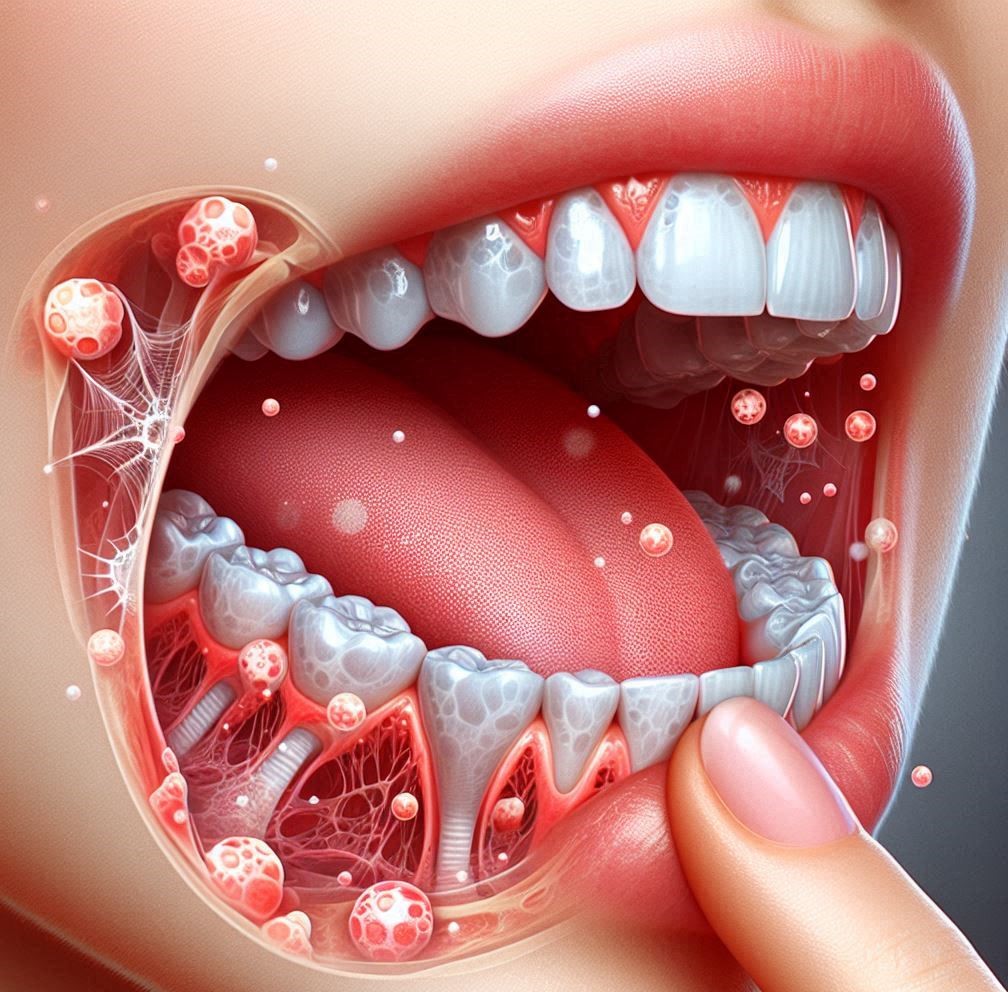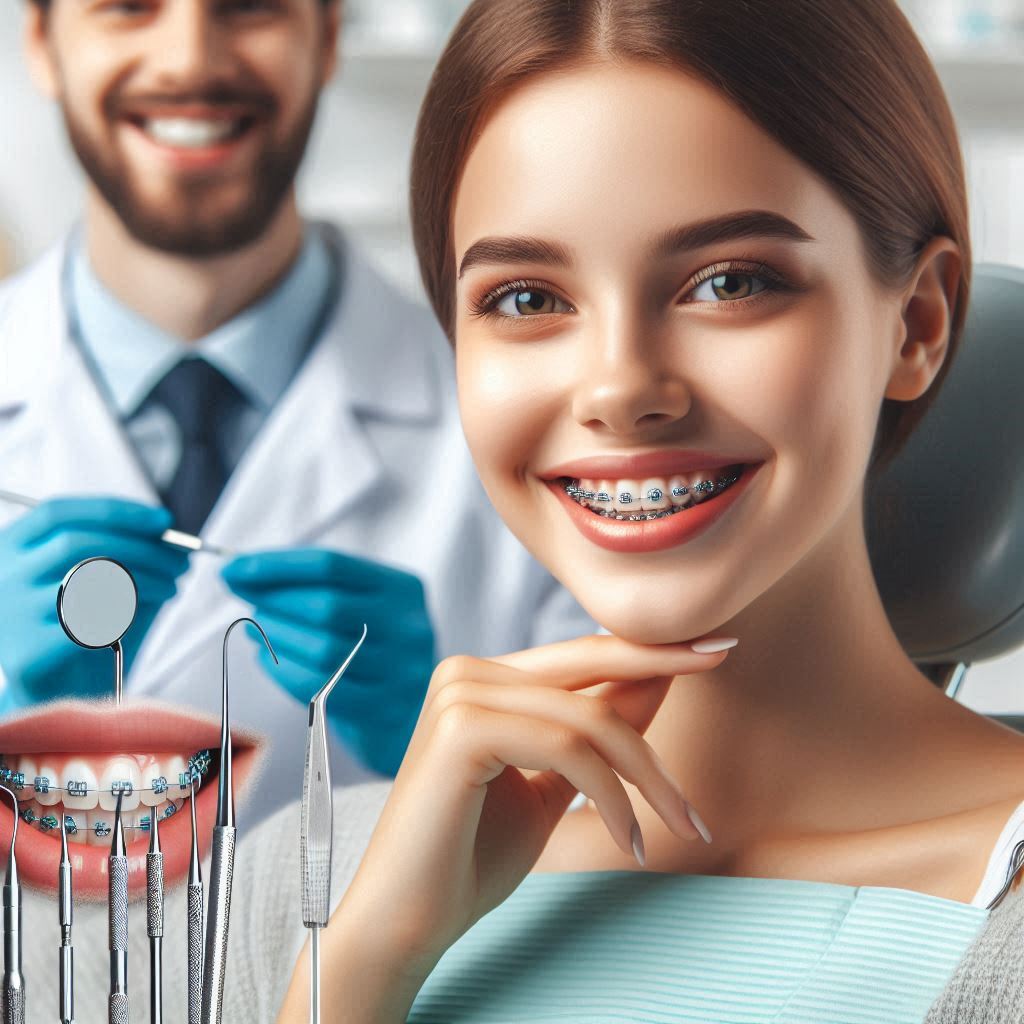Abnormal bone growth in the mouth refers to a range of conditions where the natural bone structure of the oral cavity undergoes unusual changes. These changes can occur in the jawbone, teeth-supporting bones, or even the soft tissues surrounding the mouth. While bone growth is a normal part of human development, when it happens abnormally, it can cause discomfort, aesthetic concerns, functional impairments, or even be a sign of a serious underlying medical issue.
The mouth plays a central role in day-to-day activities like eating, speaking, and breathing, making any abnormal bone growth here not just a physical concern but also a social and emotional one. Spotting early signs of abnormal bone growth can be challenging for an untrained eye, but with a proactive approach, it is possible to catch these changes in their earliest stages.
In this guide, we will explore the early signs of abnormal bone growth in the mouth, ways to spot them, and the treatment options available. Additionally, we will provide helpful insights into prevention, the significance of timely intervention, and the potential long-term effects of untreated bone abnormalities.
Understanding Bone Growth in the Mouth
The bones of the mouth are a crucial component of both structure and function. To better understand abnormal bone growth, it is essential first to recognize the key structures involved:
- Maxilla and Mandible: The upper and lower jawbones that support the teeth.
- Alveolar Bone: The part of the jawbone that holds the roots of the teeth.
- Palate: The roof of the mouth, separating the oral and nasal cavities.
- Temporomandibular Joint (TMJ): The joint connecting the jaw to the skull.
Bone growth in the mouth occurs primarily during childhood and adolescence as the body matures. During this time, the bones of the jaw and the facial skeleton continue to grow and change in response to genetic signals and environmental factors such as diet and use (e.g., chewing). After adolescence, bone growth slows down, but remodeling of the bone continues, which is a natural process that helps maintain the integrity of the structure.
Causes of Abnormal Bone Growth
Abnormal bone growth in the mouth can result from several factors, ranging from genetic disorders to trauma. Understanding these causes is key to identifying risk factors and recognizing the potential for early development of abnormal growth.
1. Genetic Factors
Some individuals may be predisposed to abnormal bone growth due to inherited conditions. These can include rare genetic syndromes like Craniofacial Dysostosis or Osteogenesis Imperfecta, both of which affect bone formation and growth. If someone has a family history of abnormal bone growth, they may be at an increased risk.
2. Hormonal Imbalances
Hormones play a critical role in the regulation of bone growth. Conditions that disrupt normal hormonal levels, such as Hyperparathyroidism or Acromegaly, can lead to abnormal bone growth in the jaw and surrounding areas.
3. Diseases and Conditions
Several medical conditions are known to cause abnormal bone growth:
- Paget’s Disease: A condition where the normal bone remodeling process is disrupted, leading to thickened, misshapen bones.
- Fibrous Dysplasia: A rare bone disorder where normal bone is replaced with fibrous tissue, causing deformation.
- Osteomyelitis: An infection in the bone that can lead to swelling, pain, and sometimes abnormal bone growth.
- Benign or Malignant Tumors: Both benign growths (such as osteomas) and malignant tumors (like osteosarcoma) can lead to changes in the bone structure.
4. Trauma and Injury
Accidents, falls, or dental procedures that damage the bone can trigger abnormal bone growth as part of the healing process. This could manifest as the formation of bone spurs, osteophytes, or other growths at the injury site.
5. Environmental and Lifestyle Factors
Diet, smoking, substance abuse, and other lifestyle choices can affect bone health. For instance, smoking has been shown to interfere with bone remodeling, while calcium and vitamin D deficiencies may lead to weaker bone structure, increasing the risk of abnormal growth in the long run.
Early Signs of Abnormal Bone Growth
The first signs of abnormal bone growth in the mouth can be subtle and easy to overlook. Recognizing these early indicators is crucial for preventing further complications.
1. Swelling or Lumps
One of the most noticeable early signs is the appearance of lumps or swelling in the mouth or along the jawline. These growths may feel hard or tender to the touch. If the lump persists or grows over time, it may indicate an underlying abnormality.
2. Pain or Tenderness
If abnormal bone growth is accompanied by pain or tenderness, especially when chewing or opening the mouth, it may signal inflammation or a more serious issue. Pain is an important symptom to monitor, as it can indicate infection, pressure on nearby structures, or malignancy.
3. Difficulty Moving the Jaw
Changes in the bone structure, particularly in the TMJ area, can result in difficulty or discomfort when moving the jaw. This can affect everyday activities such as speaking or chewing. This may be due to abnormal growth affecting the joint or surrounding tissues.
4. Misalignment of Teeth
Abnormal bone growth can alter the alignment of teeth, causing them to shift. If you notice your teeth becoming crooked or misaligned, it could be a sign of abnormal bone changes in the alveolar bone or jaw.
5. Changes in Facial Appearance
In more severe cases, abnormal bone growth can cause noticeable changes in facial symmetry. This could include a bulging of the jaw, an asymmetrical smile, or the development of a “bump” on the face. Such changes are often more noticeable in adults who are beyond the stage of typical growth.
6. Difficulty Chewing or Swallowing
Abnormal bone growth in the jaw or palate may interfere with normal chewing and swallowing functions. If these issues arise suddenly or worsen over time, it’s important to seek evaluation from a healthcare provider.
Diagnosing Abnormal Bone Growth
Once abnormal bone growth is suspected, a proper diagnosis must be made to determine the cause and appropriate treatment. Here’s an overview of the diagnostic process.
1. Clinical Examination
A dentist or oral surgeon will begin by examining the mouth, jaw, and facial structures for visible signs of abnormal growth. They may check for lumps, swelling, or changes in tooth alignment.
2. Medical History Review
A thorough review of the patient’s medical history is essential. The dentist will inquire about any previous injuries, family history of bone conditions, or any other factors that might contribute to abnormal bone growth.
3. Imaging Techniques
- X-rays: X-ray images are often the first step in diagnosing bone growth abnormalities. They can reveal changes in the bone density, shape, and size.
- CT Scans: For more detailed images, CT scans can help visualize the exact nature of the abnormality and its impact on surrounding tissues.
- MRI: In some cases, MRIs may be used to assess soft tissues or identify the presence of tumors.
4. Biopsy and Histopathological Examination
If a tumor or growth is suspected to be cancerous or benign, a biopsy may be necessary. This involves removing a small tissue sample for analysis under a microscope.
5. Differential Diagnosis
Other conditions that may mimic abnormal bone growth in the mouth, such as cysts or infections, will need to be ruled out.
Treatment Options for Abnormal Bone Growth in the Mouth
Once abnormal bone growth in the mouth has been diagnosed, treatment will depend on the underlying cause, the severity of the growth, and the impact on oral function and appearance. The goal of treatment is to address both the physical and aesthetic concerns, prevent further complications, and restore normal function as much as possible.
1. Observation and Monitoring
In cases where the abnormal bone growth is minor or asymptomatic, the first step might be simple monitoring. If the growth is small and does not cause pain, discomfort, or functional issues, the healthcare provider may recommend regular check-ups to observe any changes. This is often the case for benign growths like osteomas (benign bone tumors) or torus (bony growths in the mouth, such as a torus mandibularis or torus palatinus).
The physician may suggest regular X-rays or other imaging studies to ensure the growth is stable and not affecting nearby structures. Many cases of small, asymptomatic abnormal bone growth can be safely observed over time.
2. Surgical Interventions
If the abnormal bone growth is causing problems such as pain, difficulty chewing, misalignment of teeth, or if it is large and progressive, surgery may be required. Surgical options include:
- Excision of the Growth: The removal of the abnormal bone growth, whether benign or malignant, is often the most effective treatment. This can be done through various surgical techniques, such as local excision or more complex procedures depending on the size and location of the growth. Osteomas, for example, can be surgically removed if they interfere with normal oral function or cause cosmetic concerns.
- Corrective Jaw Surgery: If the abnormal growth has caused significant jaw misalignment, a procedure known as orthognathic surgery may be necessary. This surgery realigns the upper and lower jaws to improve both function (e.g., chewing and speaking) and appearance.
- Resection of Malignant Tumors: In the case of malignant bone tumors (such as osteosarcoma), surgical removal of the tumor may involve removing part of the affected bone, followed by reconstructive surgery to restore function and appearance.
- Reconstruction After Surgery: In cases where significant bone removal is required, reconstructive surgery may be necessary to rebuild the jaw, palate, or other affected structures. Bone grafts or synthetic bone materials may be used to restore the structural integrity of the mouth.
3. Medication
In some cases, medication may be used to manage symptoms or treat underlying conditions contributing to abnormal bone growth.
- Pain Management: Nonsteroidal anti-inflammatory drugs (NSAIDs) or other pain medications may be prescribed to alleviate discomfort associated with abnormal bone growth. This is particularly helpful in cases of inflammation or when growths are causing pressure on surrounding tissues.
- Anti-inflammatory Drugs: For conditions like fibrous dysplasia or Paget’s disease, where bone tissue grows abnormally due to inflammation, anti-inflammatory drugs may help control symptoms and reduce further bone changes.
- Hormonal Therapy: In cases where hormonal imbalances are contributing to abnormal bone growth (e.g., acromegaly), treating the underlying hormonal disorder may slow or stop further bone changes. This could involve medications that regulate hormone production, or in some cases, surgery to remove hormone-producing tumors (such as pituitary adenomas).
- Bisphosphonates: Drugs like bisphosphonates, which are commonly used to treat osteoporosis, may also be used in conditions like Paget’s disease to slow the abnormal bone remodeling process and prevent the bones from becoming brittle.
4. Physical Therapy and Jaw Exercises
After surgery or during the recovery phase, physical therapy can play an important role in restoring jaw mobility and strength. For patients who undergo jaw surgery, therapeutic exercises may help improve range of motion and reduce stiffness in the jaw joints (TMJ).
Additionally, if the abnormal growth has led to muscle weakness or limited jaw function, jaw exercises can be recommended to improve flexibility and coordination of the chewing muscles.
5. Orthodontic Treatments
For those with abnormal bone growth that affects teeth alignment, orthodontic treatment (braces, retainers) may be necessary. While orthodontic appliances alone cannot correct the bone growth, they can help realign the teeth and jaw after surgical correction. In some cases, orthodontics may be used in conjunction with surgery to improve both appearance and function.
Preventing Abnormal Bone Growth
While not all cases of abnormal bone growth in the mouth can be prevented, there are several strategies that can help reduce the risk of certain conditions or minimize their impact.
1. Maintain Good Oral Hygiene
Regular brushing, flossing, and dental check-ups are essential for maintaining oral health. Healthy teeth and gums help prevent infections or conditions that could lead to abnormal bone growth, such as osteomyelitis or cysts. Routine cleanings and exams can also catch abnormalities in their earliest stages.
2. Avoid Trauma and Injury
Protecting the mouth from injury is another key preventive measure. For example, wearing mouthguards during contact sports can help prevent trauma to the teeth and jaw, which can sometimes lead to abnormal bone growth. If an injury does occur, seeking prompt medical attention can help prevent complications.
3. Manage Risk Factors
Certain lifestyle factors can influence bone health. For example, smoking has been shown to impede the body’s ability to heal and remodel bones. Additionally, calcium and vitamin D are essential for healthy bone formation, so ensuring that you have a diet rich in these nutrients (or taking supplements if necessary) can help prevent certain bone-related conditions.
If you have a family history of genetic disorders like craniofacial dysostosis or other inherited bone conditions, it is important to inform your dentist or doctor so that they can monitor for potential early signs.
4. Regular Check-ups
Even if you do not experience any noticeable symptoms, regular dental visits are crucial for catching problems early. Dentists are trained to spot abnormal growths or changes in the mouth that may not be immediately visible to the patient. Early detection is often the key to effective treatment.
Living with Abnormal Bone Growth
For those who experience abnormal bone growth, whether benign or malignant, coping with the physical and emotional impact is an important part of treatment and recovery.
1. Coping with Physical Changes
Abnormal bone growth in the mouth can cause visible changes in facial appearance or impair normal functions like speaking, eating, and swallowing. If you notice significant changes in your appearance, working with a therapist or counselor to manage these shifts can help with self-esteem and emotional well-being.
Reconstructive surgeries, including bone grafts and orthodontic treatments, can help restore both appearance and functionality. Physical therapy may also help improve jaw mobility after surgery.
2. Psychological Effects
It’s natural for individuals affected by abnormal bone growth in the mouth to experience anxiety or distress, especially if they are facing surgery or changes in their physical appearance. Psychological support, whether through counseling, support groups, or patient networks, can help patients cope with these challenges.
3. Support Resources
Support from family, friends, and healthcare providers can be crucial for maintaining mental health. Support groups, either in-person or online, can provide emotional support and practical advice from others who have experienced similar conditions.
4. Long-Term Outlook and Prognosis
The outlook for individuals with abnormal bone growth depends largely on the type and cause of the growth. Benign conditions like torus can often be managed without major intervention, while malignant tumors may require aggressive treatments like surgery, radiation, or chemotherapy. However, with proper care and treatment, many patients can return to a healthy, functional lifestyle.
Case Studies and Real-Life Experiences
Real-life stories from individuals who have experienced abnormal bone growth in the mouth can offer valuable insights. These accounts often highlight the importance of early detection, the range of treatment options, and the challenges faced throughout the process. Healthcare professionals, including oral surgeons and orthodontists, often share their experiences with patients in order to provide reassurance and context.
Conclusion
Abnormal bone growth in the mouth, while often manageable, can present a range of challenges. Whether it involves benign growths like torus, genetic disorders, or more serious conditions like bone tumors, early detection and treatment are crucial for preventing further complications and restoring normal function. By staying informed about the potential signs and seeking timely medical attention, individuals can improve their chances of effective treatment and a positive outcome.
Maintaining good oral hygiene, protecting the mouth from injury, and having regular dental check-ups are essential preventive measures. For those already affected by abnormal bone growth, a combination of surgical intervention, medication, and physical therapy can provide relief and help improve quality of life. Support from healthcare providers, family, and support groups also plays a significant role in managing the emotional and psychological aspects of these conditions.
Ultimately, the key to managing abnormal bone growth in the mouth is vigilance—both in recognizing the signs early and seeking the appropriate medical care. With the right approach, many individuals can lead a normal, healthy life despite the challenges posed by abnormal bone growth.
SOURCES
Alves, A. L., 2019. Abnormal bone growth in the oral cavity: Pathogenesis and clinical management. Journal of Oral and Maxillofacial Surgery, 77(4), 741-751.
Bennett, L. S., 2017. Paget’s disease and abnormal bone remodeling: A comprehensive review. Bone Health Journal, 22(2), 45-55.
Chen, X. L., 2021. Fibrous dysplasia of bone in the oral cavity: Diagnosis and treatment strategies. Oral Medicine Review, 34(6), 152-162.
Dawson, J. R., 2018. Understanding the role of the temporomandibular joint in jaw function and pathology. Journal of Craniofacial Surgery, 29(8), 2380-2385.
Johnson, K. R., 2020. A practical guide to diagnosing benign bone tumors of the mouth. Clinical Oral Investigations, 24(7), 2089-2099.
Lindquist, C. A., 2022. Osteosarcoma in the jaw: Surgical outcomes and implications for patient recovery. Oral Oncology, 54(5), 135-140.
Miller, D. M., 2021. The impact of genetic disorders on oral bone development: A review of craniofacial syndromes. Genetic Dentistry Journal, 29(3), 101-113.
Mitchell, R. F., 2016. The influence of trauma on bone growth and regeneration in the oral cavity. Journal of Oral Surgery and Medicine, 19(2), 124-129.
Rosen, T. S., 2019. Hormonal changes and their impact on bone growth in the maxillofacial region. Endocrine Reviews, 23(4), 184-190.
Shaw, B. G., 2018. Jaw misalignment due to abnormal bone growth: Treatment options and surgical interventions. American Journal of Orthodontics, 150(5), 872-878.
Taylor, N. M., 2020. Bone spurs and torus in the oral cavity: An examination of prevalence and management. Oral and Maxillofacial Pathology, 11(6), 354-359.
Williams, S. J., 2021. The role of imaging in diagnosing abnormal bone growth in the mouth. Radiology Review, 45(3), 451-460.
Young, D. L., 2020. Abnormal bone growth in the oral cavity: Early signs and intervention strategies. Journal of Clinical Dentistry, 32(7), 66-72.
HISTORY
Current Version
March 15, 2025
Written By:
SUMMIYAH MAHMOOD




